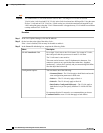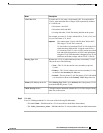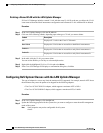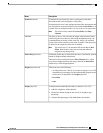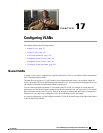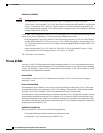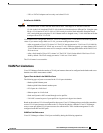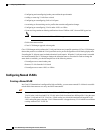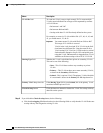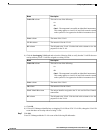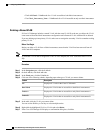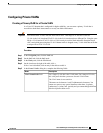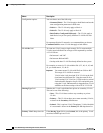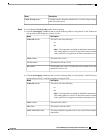
• Configuring and unconfiguring border ports and border port channels
• Adding or removing VLANs from a cloud
• Configuring or unconfiguring SAN or NAS ports
• Associating or disassociating service profiles that contain configuration changes
• Configuring or unconfiguring VLANs under vNICs or vHBAs
• Upon receiving creation or deleting notifications from a VMWare vNIC, from an ESX hypervisor
This is outside the control of Cisco UCS ManagerNote
• Fabric interconnect reboot
• Cisco UCS Manager upgrade or downgrade
Cisco UCS Manager strictly enforces the VLAN port limit on service profile operations. If Cisco UCS Manager
detects that you have exceeded the VLAN port limit service profile configuration will fail during deployment.
Exceeding the VLAN portcount in a border domain is less disruptive. Whenthe VLAN port count is exceeded
in a border domainCisco UCS Manager changes the allocation status to Exceeded. In order to change the
status back to Available, you should complete one of the following actions:
• Unconfigure one or more border ports
• Remove VLANs from the LAN cloud
• Unconfigure one or more vNICs or vHBAs
Configuring Named VLANs
Creating a Named VLAN
In a Cisco UCS domain that is configured for high availability, you can create a named VLAN that is accessible
to both fabric interconnects or to only one fabric interconnect.
You cannot create VLANs with IDs from 3968 to 4047. This range of VLAN IDs is reserved.
VLANs in the LAN cloud and FCoE VLANs in the SAN cloud must have different IDs. Using the same
ID for a VLAN and an FCoE VLAN in a VSAN results in a critical fault and traffic disruption for all
vNICs and uplink ports using that VLAN. Ethernet traffic is dropped on any VLAN which has an ID that
overlaps with an FCoE VLAN ID.
Important
Cisco UCS Manager GUI Configuration Guide, Release 2.0
280 OL-25712-04
Configuring Named VLANs



